Most porches are at least a few feet off the ground, making them level with the rest of the house. The space underneath a porch is usually just bare earth, which isn't the best scenery. The traditional covering for this space is the lattice that some people find bland or too ordinary. Luckily, we've researched seven alternatives to porch lattice and have detailed them for you here.
If you don't like the look of the lattice as a cover for under the porch, here are a few alternatives:
- Vertical wooden planks
- Horizontal wooden planks
- Wooden planks with a pattern or design
- Rock porch skirting
- Brick or stone
- Alternative pattern vinyl lattice
- Enclose the space
You can use each of these materials in place of the lattice as a porch or deck skirting. Please continue reading to find out more about how each of the types is used and other recommendations for the area around the bottom of your porch.
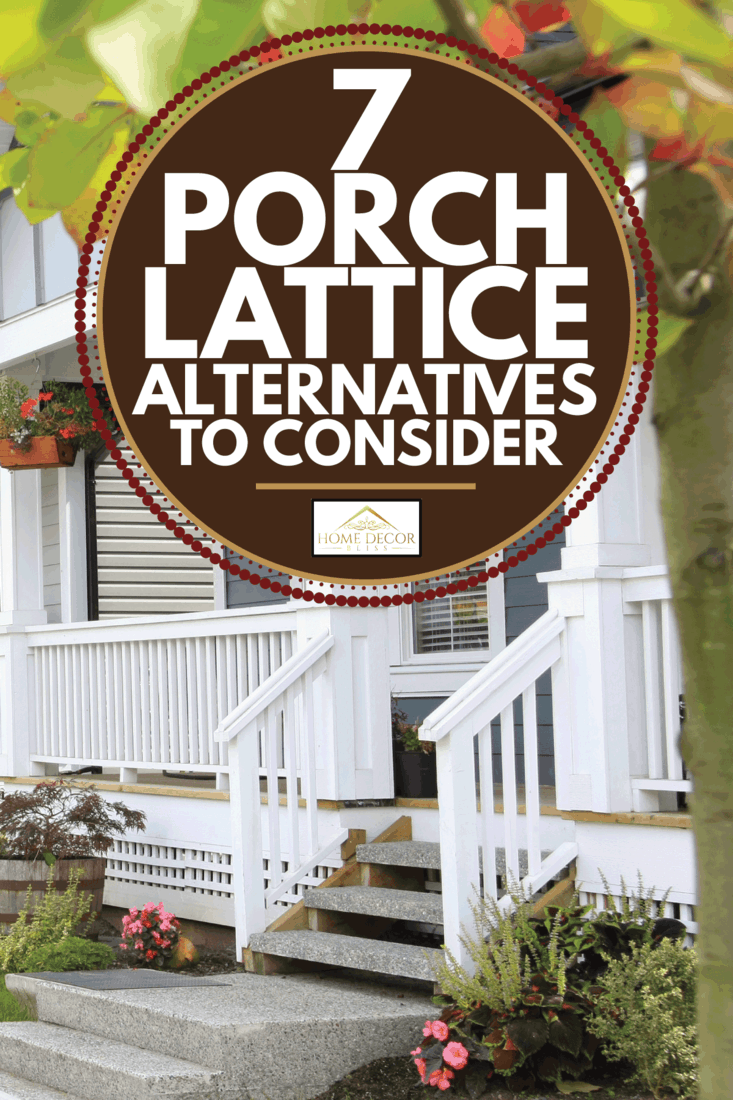
7 Alternatives To Porch Lattice
People have been using lattice as a porch skirting material for as long as houses have been around. Lattice porch skirting is typically made from wood, is easy to assemble, and definitely looks better than having nothing under your porch. While wood lattice is the most common porch skirt, there are many other options.
The alternatives serve the same purpose as traditional lattice, but some may work better than others, depending on the size of your porch and the style of your home. These options are not listed according to quality and are not ranked. Each option is a great porch lattice alternative.
1. Vertical Wooden Planks
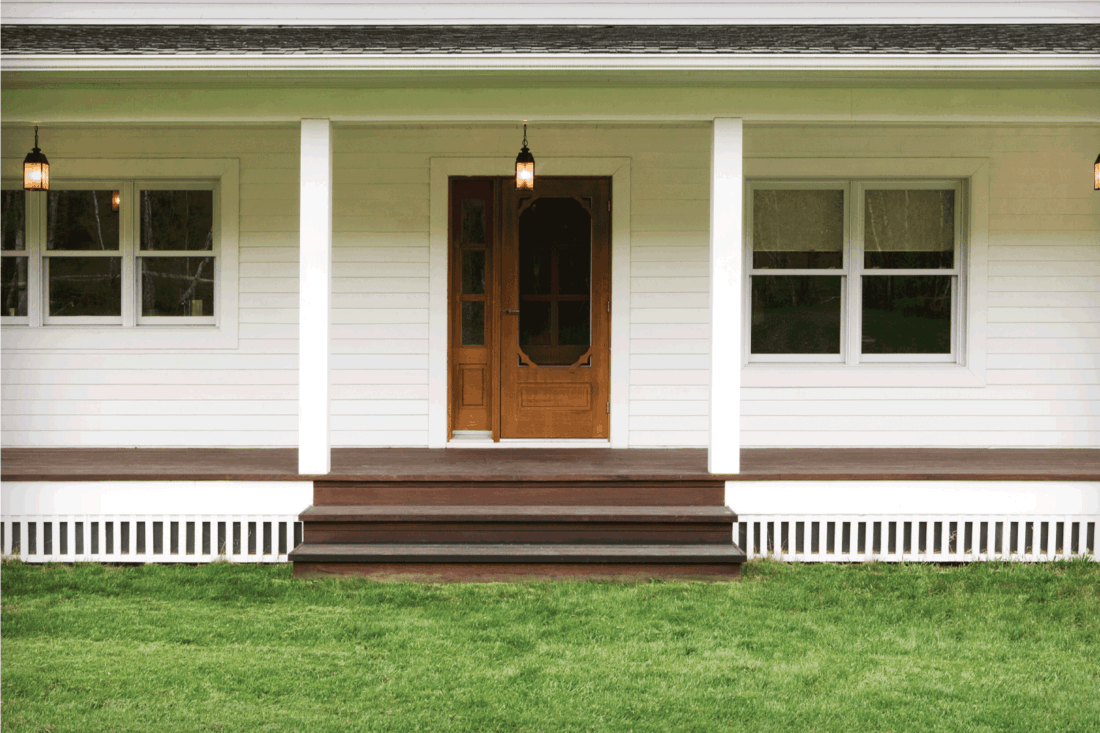
We may include affiliate links and curated AI content to highlight top design styles.
Vertical wooden planks make clean, uniform porch skirting. This type of skirting can make a low-to-the-ground deck seem much taller than it is, something that can add depth to a yard where there is a lot of open space and few trees. Wood should be weatherproof and can match or coordinate with your porch.
2. Horizontal Wooden Planks
The second porch skirt style on this list is horizontal wooden planks. They should be made of treated wood and either match or complement the stain or color of your porch. The planks can be flush against one another, spaced out, or layered on top of one another like roofing shingles.
Although they have the same material and installation process as vertical wooden planks, horizontal wooden planks achieve a different aesthetic. Horizontal planks work in contrast with the deck or porch surface, making it seem like the platform rises naturally out of the ground.
3. Patterned Wooden Planks
The third style on the list is a little less common but visually pleasing just the same. You can achieve this look by taking weatherproof wooden boards and cutting a simple design in them before installing them as porch skirting. Designs like circles or triangles add a subtle spark to an otherwise dull board.
Patterned wooden planks improve the look of a porch, whether you arrange them vertically or horizontally. They can be close together or far apart, depending on what the design requires.
4. Rock Porch Skirting
Also creative, like patterned wooden planks, rock designs are a stylish way to cover the gap underneath a porch or deck. This type of rock is sometimes artificial and can be purchased in panels or small sections that are pretty easy to install. They are designed for outdoor use, making them a great porch skirting.
5. Brick or Stone
Brick or stone is easier to install than the previous option but still looks stylish and professional. The size and type of stone you choose should depend on the size of the space and the color of your home and existing porch structure. Choose a stone-type color that coordinates well and flows naturally into the space.
Installing brick or some types of stone may require using mortar or another bonding agent. For this, it's best to go through a professional.
6. Alternative Patterned Vinyl Lattice
We know you are looking for options outside of lattice, but this is not a typical wooden, criss-cross lattice. This lattice is purchased in sections and comes in many color and pattern variants. Another bonus is that they are easy to install and replace.
7. Enclosing the Space Beneath the Porch
This option is exclusively for people who have a very tall, large porch or deck and are okay with making permanent modifications to it. You can completely enclose the space below a porch or deck to form a crawl space or storage shed. The look of the outside of this new shed is entirely up to you, but making the siding match the house is great for a uniform, natural look.
What should I put around the bottom of my porch?
There are several reasons you want to have a porch skirt around the bottom of your porch. First, it adds another stylish element to your outdoor space. Second, it hides undesirable landscapes typical under porches, like bare earth. Consequently, any yard tools or other items you store under your porch are also not visible.
So, of all the porch skirting options described above that are different from the traditional wooden lattice, which one is best for you?
What can I put on the ground around my porch?
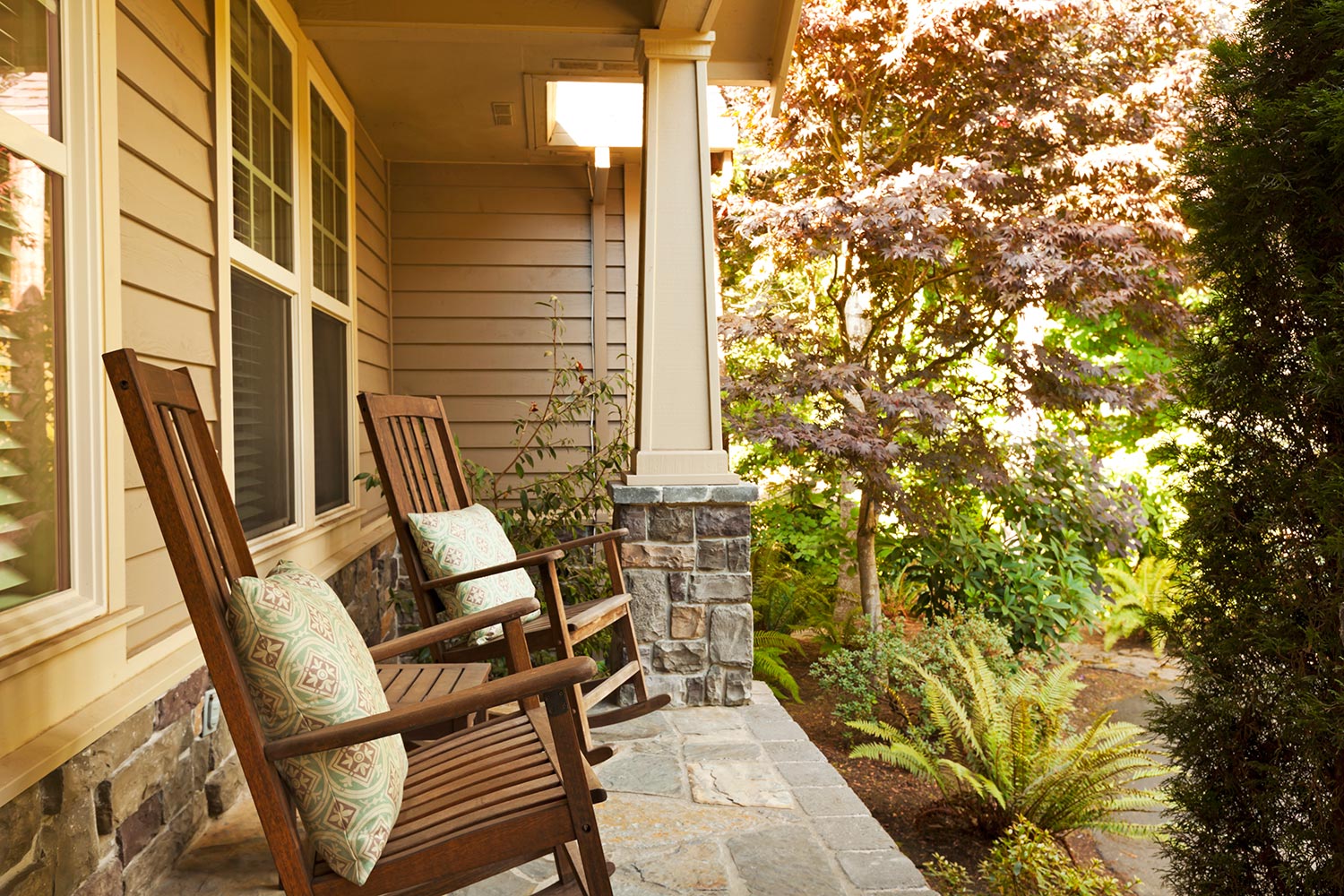
It would be best to use the ground area around, but not beneath, a porch for decorative or functional purposes. We recommend using pavers or planting plants to best use this space. First, if the area around the porch is a low-traffic area and the soil is favorable, we recommend plants like flowers or shrubbery. You could even stick with a nice grass if your porch and porch skirt is particularly nice.
Second, if the ground space around your porch is a high-traffic area, grass likely won't do well there. In this case, pavers are a great option to help preserve your grass and bring another stylistic element to the yard. You can purchase pavers at hardware or home and garden stores, or you can mix concrete and make them yourself with a concrete mold.
Click here to see the CJGQ Paver Mold at Amazon.
What can I plant around my porch?
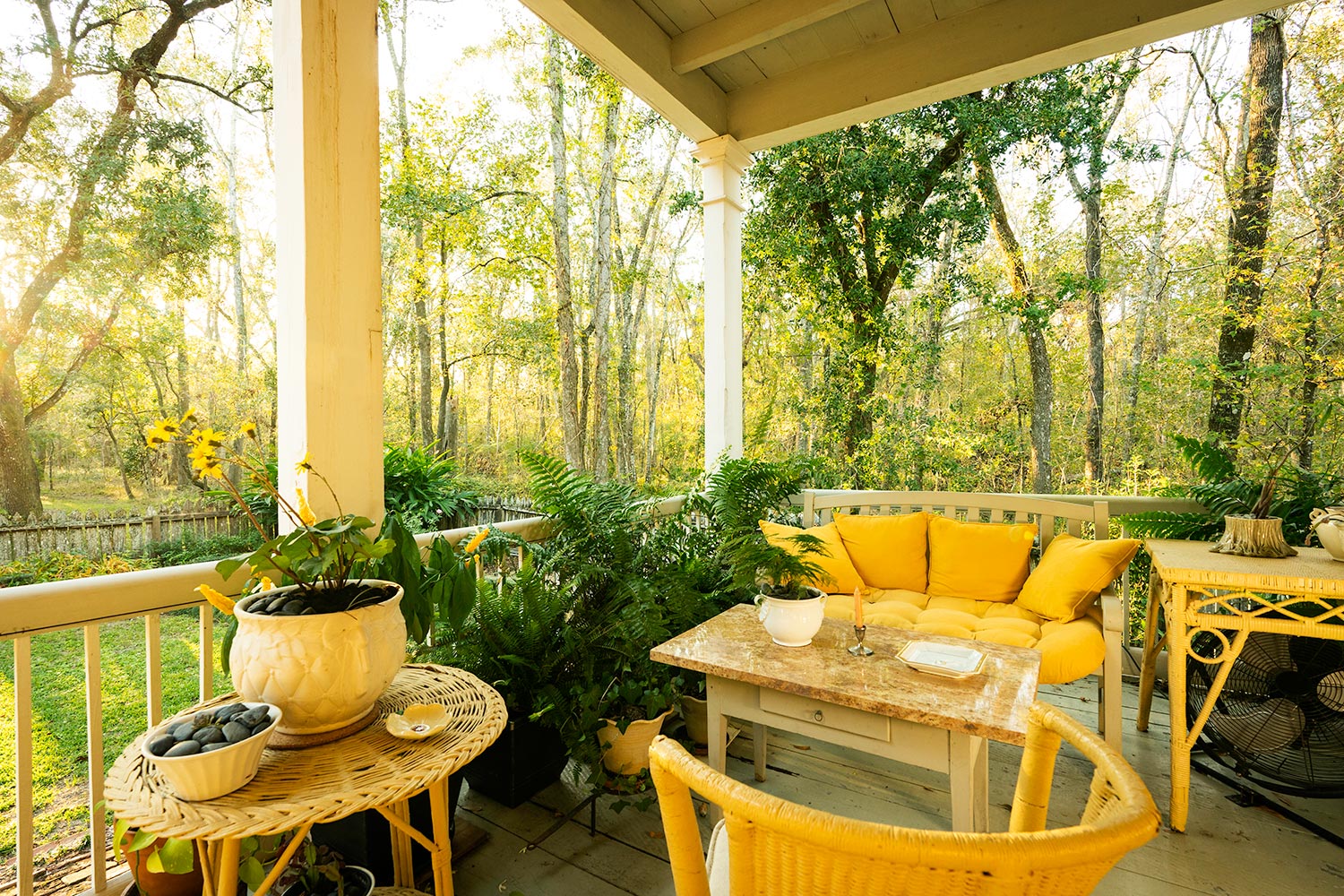
We recommend planting a mixture of flowers and shrubbery in the area around a porch. The type of plants you choose is up to you, but remember that the areas around porches are often shaded for at least half of the day. So, plants that thrive in partial sunlight are perfect candidates for the space surrounding a porch.
If you decide to use a type of lattice, vine plants like ivy are a great plant option for porches. Plants like ivy can be planted at the base of the porch lattice and will climb the lattice, covering it as the plant grows. Depending on the geographical location, vine plants may not be a year-round solution to covering your lattice.
What do I do with the ground under my deck?
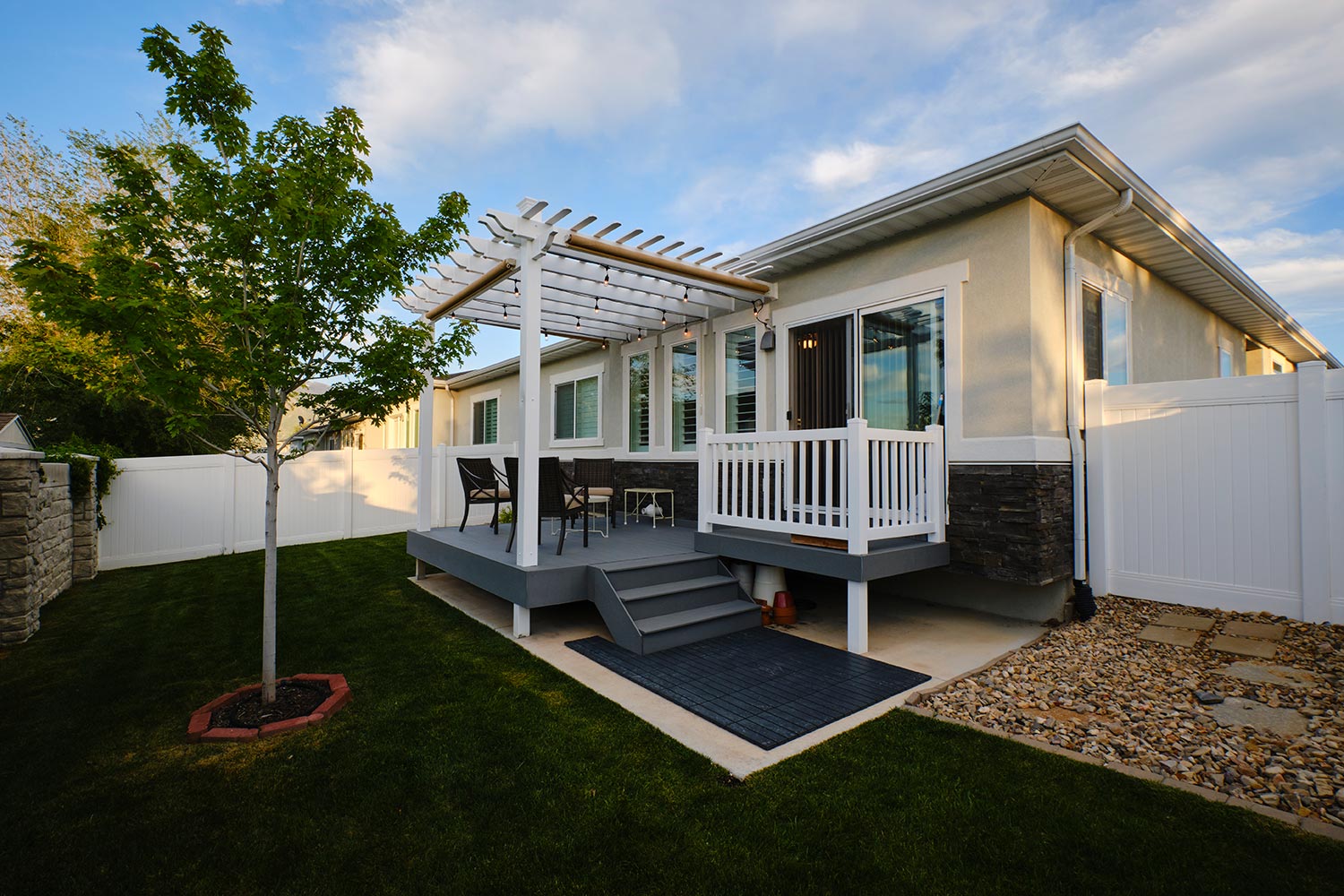
How you close in your deck and the skirting you use largely decides what you can do with the ground under your deck. If your deck is open-air without any cover or skirting or you choose a skirting like a lattice that allows air and therefore plant spores into that space, then you could experience weed growth.
To avoid weed growth, we recommend putting down a section of landscaping cloth with either gravel or pavers on top of it. This will keep the under-deck space tidy and suitable for storing outdoor equipment.
In Closing
There are many alternatives to traditional lattice coverings for deck skirting. These seven options are the best of a combination 0f style and ease of installation. Which type you choose largely depends on your personal tastes and what might work in your yard. Hopefully, the material and craft suggestions in this post have helped guide your path to find the right porch skirting.
While you're here, please check out some of our other posts:
11 Incredible Deck Railing Style Ideas
100 Fabulous Front Porch Ideas
FAQs
What do you put on the bottom of a porch?
The bottom of a porch typically requires a durable material like concrete, pavers, brick, or stone. These materials will help protect the porch from water damage and provide a sturdy foundation.
How do you enclose the bottom of a porch?
The most common way to enclose the bottom of a porch is to build a skirt or lattice wall around the perimeter. This will provide a barrier that helps keep out animals and pests while providing an aesthetic element to the porch. If the porch is raised, consider adding a railing and steps to provide a safe way to access the porch.
What is the space under a porch called?
The space under a porch is commonly called a "crawl space."
What is the best material for under a deck?
The best material for under a deck is a geotextile fabric. This fabric helps prevent weed growth while allowing water to drain from the deck. It also helps protect against soil erosion and can reduce the maintenance needed around the deck.



![Get Your Roof Ready: How to Apply Aluminum Roof Coating [Step by Step Guide]](https://homedecorbliss.com/wp-content/uploads/2023/08/shutterstock_1624204837-600x400.jpg)
